At crowded live music venues a photographer’s mobility can be quite limited and the stage lighting levels are low, (really low). I’m not sure who has the more difficult task: low light sports shooters with their super-telephoto lenses or performance photographers with wider lenses but even lower light levels? If only the stage lighting of a small venue could afford me an aperture of f/4, a shutter speed of 1/500sec and ISO 1600.
In May 2005 I purchased a new Nikon D2x. A day later I put the D2x through its paces as I watched Australian rockers Cog play the Coolangatta Hotel in Queensland. I was there as a fan and thus was under no commercial pressure. I do find, however, that live music photography is the most challenging aspect ofmypaid work.
During a live music performance the periphery of the stage is usually in darkness. The gelled incandescent lights pulse with saturated colors, while the performers barely stand still as they move to the sound. It’s both a horrible set of photographic circumstances and a great way to discover what a new photographic tool is capable of.
In the second week of December I received my Nikon D3. My trial by fire with a D2x at the Cog gig in 2005 proved so informative that I jumped at the opportunity to familiarize myself with the D3 in a similar challenging environment. Enter Clutch from Maryland in the U.S. who took to the stage on December 13th 2007 at the Hi-Fi Bar in Melbourne, Australia while I took my place amongst the crowd. The dual compact flash card slots of the D3 were loaded with two 8GB CF cards, leaving me free to concentrate on the action as Clutch launched into their brand of bluesy rock.

_______________________________________________________________
Lens Choice and Sensor Size
Standing just over 10 meters (33 feet) from the stage I quickly learnt that the 28mm f/1.4D lens I’d chosen was too wide for an overview of the stage action. It was clear that I was still thinking in terms of lens choices for the smaller APS-C sensor (DX). Switching to a 50mm f/1.4D lens solved this problem, but I started asking myself how close would I have to be to achieve the tightly composed images I’m use to capturing with my 135mm f2D lens on a D2x? After nearly 10 years of using smaller sensor digital SLRs, the short answer is that my longer lenses on the D3 don’t have enough reach to work in the way that I’ve become accustomed to.
At the Clutch gig I also struggled with the more condensed array of the full-frame auto-focus system. When I’m trying to capture tightly composed images, I prefer an auto-focus sensor array that covers as much of the frame as possible. Admittedly the D2x was the first camera that provided me with this luxury. Having captured nearly 100,000 frames on my D2x, it’s fair to say that I’ve formed a strong working relationship with this great camera. The D3 full-frame FX sensor gives our lenses less optical reach with a more centralized AF system when compared to the D2x,D2xs or D300. From my short stint of photography at the Clutch concert, I now know that the D3 will inevitably change my approach to focus acquisition and composition. Major changes to the foundations of one’s working methods are welcome in the long term, but the full-frame D3 is really asking that I put in some hard yards prior to using this new camera in a professional capacity.

_______________________________________________________________
Nikon’s Variable Image Areas
I was never one to shy away from the ‘High Speed Crop’ mode that was first implemented on the D2x (6.8MP). Therefore, on quite a few occasions at the Clutch gig I found myself switching the D3 to the DX crop mode (this is the reduced resolution APS-C sweet spot of the D3’s full-frame sensor – 5.1MP). You change the Image Area mode by simply holding down the ‘function button’ and rotating the main command dial. When ‘High Speed Crop’ mode is selected on the original D2x, the viewfinder displays four right-angle lines on the outer edges of the cropped rectangular frame. These right-angle lines are illuminated along with the selected AF point to signify that the ‘High Speed Crop’ mode is in use.
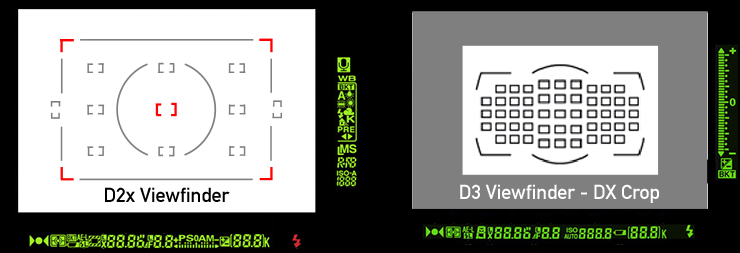
With the D2xs and now the D3, Nikon makes the outer edges of the viewfinder opaque to denote when the cropped sensor modes are in use. I’m sure the newer system functions effectively in well illuminated environments but it’s more or less invisible against dark subject matter; consequently I naively shot 34 frames in the odd and newly implemented 5:4 crop mode of the D3. This occurred because the outer edges of my subject were actually surrounded by darkness, so I was unable to see the cropped opaque edges. Why did Nikon choose to add a 5:4 ratio anyway and why can’t you choose to turn off the 5:4 ratio crop in the custom functions? In this age of wide-screen products, I would’ve thought that a 16:9 ratio crop (10MP) or the more panoramic 6:3 ratio (9MP) would represent more sensible inclusions.
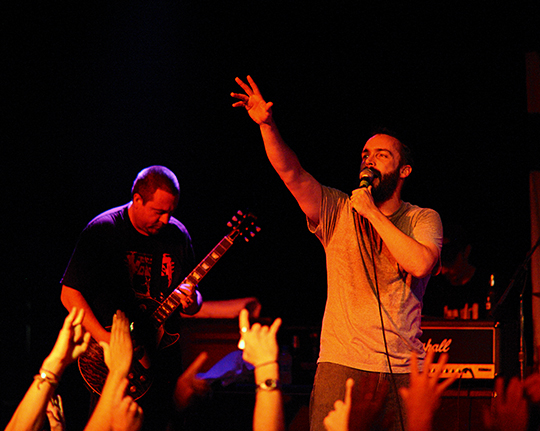
Nikon D3 with a 135mm f/2D lens. 6400iso f/2 @ 1/250sec – 5:4 ratio crop (High ISO NR: OFF)
_________________________________________________________________
Changes to the Viewfinder Info Layout
Since receiving the D3 I’ve photographed with it on a daily basis for it is only with practice that the operation of a camera becomes second nature. Rock music photography is the only type of photography for which I use the shutter priority exposure mode (‘S/Tv’). For other types of photography I prefer to set the exposure manually. To make more room for the layout of information within the viewfinder, Nikon have changed the placement of the manual exposure display on the D3. On every Nikon camera body I’ve ever owned the viewfinder’s manual exposure display is positioned horizontally under the image area. With the D3, Nikon decided to position this exposure display vertically and to the right of the image area (like the viewfinder of a 1series Canon camera). This I’m sure will not pose a problem in time but at the moment it’s taking some real getting used to. I’ve noticed on a number of occasions, when I initially put the viewfinder to my eye, I mistakenly look to the bottom of the image area to check the exposure. This small change is definitely slowing down the way I work and has already cost methe shot on a few occasions.
________________________________________________________________
The Limits of High ISO Performance and Color Gamut
In the days prior to the concert I’d done some controlled testing to check and compare lens/body auto-focus accuracy, dynamic range and high ISO noise, so I had a fair idea about what I could expect from the D3’s image quality. None of this, however, prepared me for how well the camera handled the low and changeable lighting conditions of the concert.
For my commercial and domestic commissions I rarely shoot the D2x over 800iso and yet performance photography in smaller venues usually demands at least 1600iso. To enable faster shutter speeds at 1600iso, I developed a technique to augment the gelled stage lighting with a Nikon SB-800 Speedlight mounted on the D2x’s hot-shoe. To avoid the look of on-camera flash I add two of the florescent lighting correction gels (FL-G1) found in the Nikon Speedlight accessory filter set (SJ-1).

Two lime-green gels are placed inside the bounce-flash diffusion dome (SW-10H) of a SB-800 Speedlight with its iTTL exposure value set to minus one and two thirds. There are a couple of shortcomings to this technique. The first is the obvious and visually disruptive quality the flash brings to a stage performance. Secondly, flash to subject distances dictate that the audience can’t get between the lens and the performers, because the strobe will over expose the audience in the foreground. The use of the lime-green gels is a compromise and not an ideal solution. The inspiration for the technique came about due to the fact that I always found myself adding yellow and green to the white balance of concert lighting during raw file conversion. Rather than settling on post production color correction, I’ve found that two lime-green gels give the lighting of the photographs a grittyMatrixkind of feel.
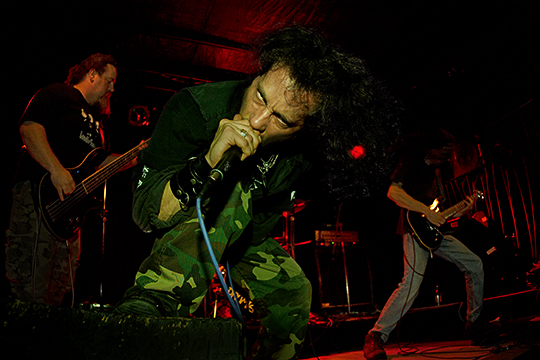
Comparably, the D3 allows photographers to work at 3200iso and 6400iso whilst achieving an image quality similar to the D2x at 1600iso.The D3 allows for greater amplification of the existing light levels, nevertheless from time to time there is a need for additional color balancing of the stage lighting. This is because gelled incandescent stage lights have a tendency to produce extreme levels of color saturation. It’s in this regard that I was keen to see how the D3’s auto white balance and uncompressed 14bit NEFs handled this extreme lighting situation.
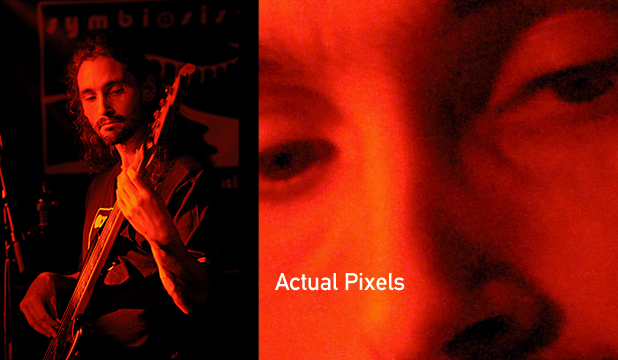
Nikon D2x with a 135mm f/2D lens. 1600iso f/2.5 @ 1/80sec – 12bit NEF Raw (High ISO NR: OFF)
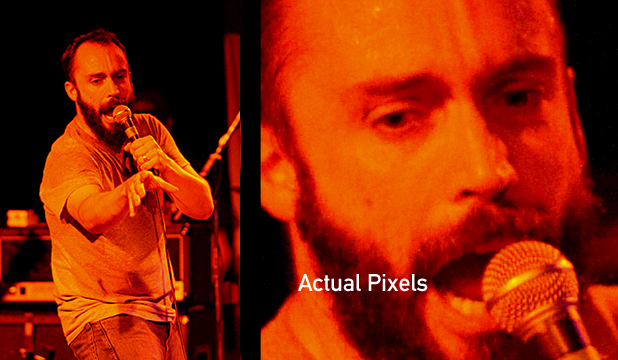
Nikon D3 with a 135mm f/2D lens. 6400iso f/2 @ 1/250sec – 14 bit NEF Raw (High ISO NR: OFF)
The initial steps of my image processing utilizes the wide gamut ProPhoto RGB ICC profile and yet the combination of channel clipping and out of gamut colors means the D3 is a slight improvement, but not a panacea for live music photographers. (The web images presented in this article have been converted to the sRGB color space.)
_________________________________________________________________
Conclusion
The D3 images captured on 13 Dec 07 weren’t the most dynamic music photos I’ve taken to date. I’m even willing to concede that the images themselves are perhaps less interesting than the lessons I’ve learned with this new photographic tool. However, it’s only with a commitment to unpaid practice that I can confidentially integrate the Nikon D3 into my professional photography.
When someone clasps at three newly purchased drinks and makes their way across a crowded barroom, pathways seem to magically open up – like a Biblical parting of the seas. Unfortunately the D3 won’t give you that kind of mobility in a crowded bar, nor will it turn night into day, but this new technology is capable of making the difficult task of live performance photography a little easier.
If I were asked to arbitrarily rate the performance of the D2x and the D3 under live music conditions, I’d rate the D2x as a 7 and the D3 as 8.5 out of 10. I’d rate Clutch’s musical performance on the night as 10/10… After all a passion for the things we photograph is far more important than the thing we use to photograph.
December 2007
Darren Henderson
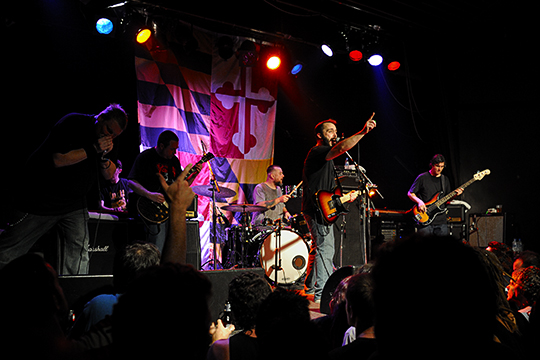
Lorem ipsum dolor sit amet, consectetur adipiscing elit, sed do eiusmod tempor incididunt ut labore et dolore magna aliqua. Ut enim ad minim veniam, quis nostrud exercitation ullamco laboris nisi ut aliquip ex ea commodo consequat. Duis aute irure dolor in reprehenderit in voluptate velit esse cillum dolore eu fugiat nulla pariatur. Excepteur sint occaecat cupidatat non proident, sunt in culpa qui officia deserunt mollit anim id est laborum.
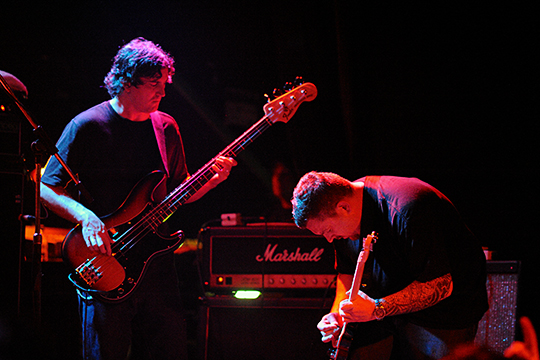
Lorem ipsum dolor sit amet, consectetur adipiscing elit, sed do eiusmod tempor incididunt ut labore et dolore magna aliqua. Ut enim ad minim veniam, quis nostrud exercitation ullamco laboris nisi ut aliquip ex ea commodo consequat. Duis aute irure dolor in reprehenderit in voluptate velit esse cillum dolore eu fugiat nulla pariatur. Excepteur sint occaecat cupidatat non proident, sunt in culpa qui officia deserunt mollit anim id est laborum.
Lorem ipsum dolor sit amet, consectetur adipiscing elit, sed do eiusmod tempor incididunt ut labore et dolore magna aliqua. Ut enim ad minim veniam, quis nostrud exercitation ullamco laboris nisi ut aliquip ex ea commodo consequat. Duis aute irure dolor in reprehenderit in voluptate velit esse cillum dolore eu fugiat nulla pariatur. Excepteur sint occaecat cupidatat non proident, sunt in culpa qui officia deserunt mollit anim id est laborum.
You May Also Enjoy...
Central Park Storm 8
Please use your browser's BACK button to return to the page that brought you here.
